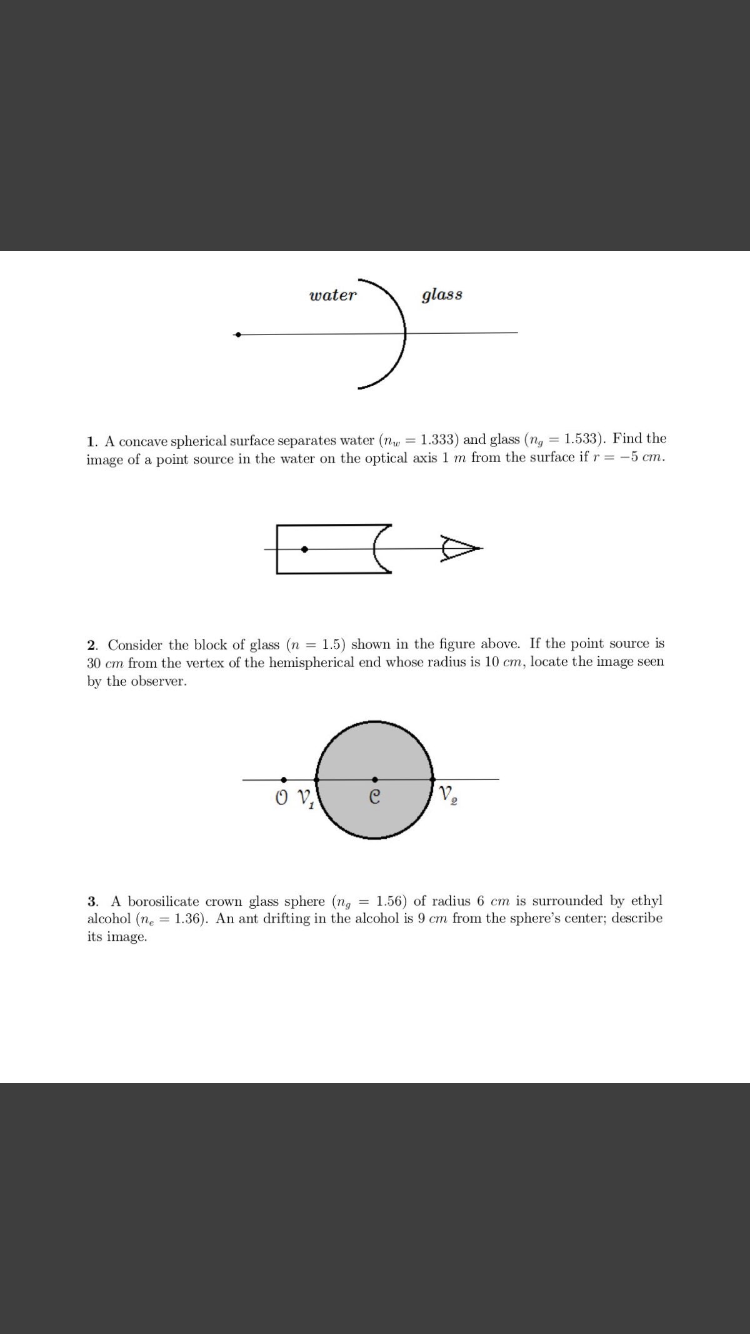glass water 1. A concave spherical surface separates water (n = 1.333) and glass (ng = 1.533). Find the image of a point source in the water on the optical axis 1 m from the surface if r = -5 cm. 2. Consider the block of glass (n = 1.5) shown in the figure above. If the point source is 30 cm from the vertex of the hemispherical end whose radius is 10 cm, locate the image seen by the observer. O V, A borosilicate crown glass sphere (n, = 1.56) of radius 6 cm is surrounded by ethyl alcohol (n, = 1.36). An ant drifting in the alcohol is 9 cm from the sphere's center; describe its image. 3.
glass water 1. A concave spherical surface separates water (n = 1.333) and glass (ng = 1.533). Find the image of a point source in the water on the optical axis 1 m from the surface if r = -5 cm. 2. Consider the block of glass (n = 1.5) shown in the figure above. If the point source is 30 cm from the vertex of the hemispherical end whose radius is 10 cm, locate the image seen by the observer. O V, A borosilicate crown glass sphere (n, = 1.56) of radius 6 cm is surrounded by ethyl alcohol (n, = 1.36). An ant drifting in the alcohol is 9 cm from the sphere's center; describe its image. 3.
Related questions
Question
Please help with question #2. Thank you.

Transcribed Image Text:glass
water
1. A concave spherical surface separates water (n = 1.333) and glass (ng = 1.533). Find the
image of a point source in the water on the optical axis 1 m from the surface if r = -5 cm.
2. Consider the block of glass (n = 1.5) shown in the figure above. If the point source is
30 cm from the vertex of the hemispherical end whose radius is 10 cm, locate the image seen
by the observer.
O V,
A borosilicate crown glass sphere (n, = 1.56) of radius 6 cm is surrounded by ethyl
alcohol (n, = 1.36). An ant drifting in the alcohol is 9 cm from the sphere's center; describe
its image.
3.
Expert Solution
This question has been solved!
Explore an expertly crafted, step-by-step solution for a thorough understanding of key concepts.
This is a popular solution!
Trending now
This is a popular solution!
Step by step
Solved in 2 steps with 2 images
